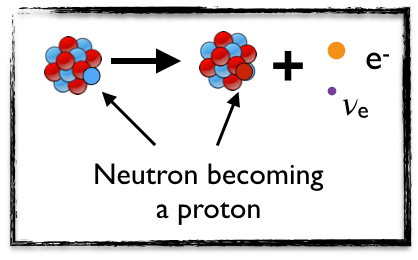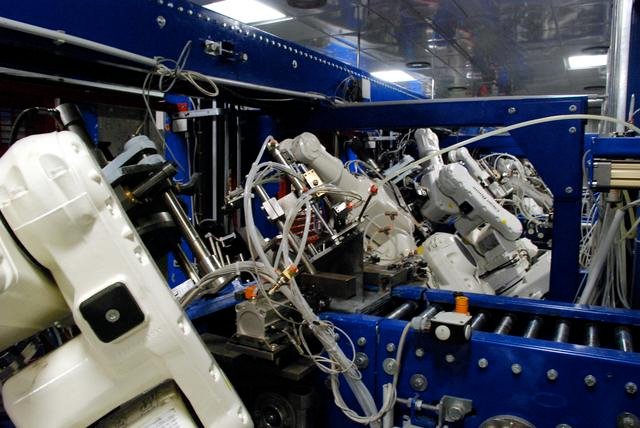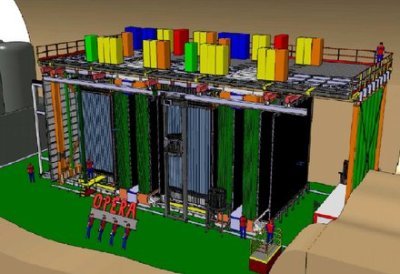A final song for OPERA: 6 years of neutrino data, nice events and an exemplary open data policy
The OPERA experiment, aiming for a better understanding of neutrino physics, has released its final results a couple of weeks ago. Five years of data taking, the observation of 10 events and an analysis that took 6 years have yielded an unambiguous proof that muon neutrinos can be converted into tau neutrinos when they propagate.

[image credits: OPERA (INFN) (CC BY-SA 3.0)]
This experiment is also a first of its kind in terms of open science.
For this first time in particle physics, a non-LHC experiment has indeed publicly released its data through the CERN Open Data portal.
In this post, I will briefly discuss neutrino physics (that I have already covered at large here), before focus on OPERA and its new results recently published (open access) in Physical Review Letters.
An unrelated item (but not a song) is as usual hidden in this article.
NEUTRINOS IN A NUTSHELL
At the very beginning, there was not only light, but also the Standard Model of particle physics. This theoretical framework has been developed in the last century and allows for predicting how the elementary particles live, eat, drink and dance.
More seriously, the Standard model describes the dynamics of the elementary building blocks of matter. These building blocks consist in a handful of particles underlying the structure of all (visible) matter in the universe. We have 12 of these building blocks, and we focus in this post on three of them, the neutrinos.

[image credits:homemade]
Neutrinos date back from the early studies of radioactivity, that are today 100 years old.
In those studies, physicists were studying specific decays of given atomic nuclei into other atomic nuclei together with the emission of an extra electron.
With the tools and knowledge available at that time, it was calculated that the energy of the electron should have a unique value Q. However, data was showing that the electron energy could be anything between 0 and this Q value.
Some energy, i.e. the difference between Q and the observed electron energy, was thus missing. A couple of years later, Pauli postulated that the missing energy was carried away by an invisible particle, a neutrino. Further developments then lead to the unraveling of the weak force and to the fact that the masses of the neutrinos were all zero.
The story does mot end here, in particular because nature is funny and like to be slightly less simple than expected. Instead of a single neutrino, we have three copies, or flavors, of neutrinos: the electron, muon and tau neutrinos.
And things got calm until the discovery that neutrinos could oscillate into each other. An electron neutrino could hence turn into a muon or a tau neutrino when it travels. This has profound consequences, the most important one being that the neutrino masses are non-zero and that the Standard Model must be extended.
In the meantime, many experiments have been built to measure the properties of these oscillations and investigate them in their greatest details. OPERA is one of them.
THE OPERA EXPERIMENT AND ITS GOAL
There are many parameters connected to neutrino oscillations, and the understanding of this phenomenon requires an accurate measurement of all of them. The OPERA experiment was designed to measure, for the first time, the parameters connected to the appearance of a tau neutrino from the oscillation of a muon neutrino.
For this, we need to observe events where a muon neutrino transforms into a tau neutrino. Spoiler: OPERA observed actually 10 of those.
The only issue is that the probability a given neutrino switches to another species is small. Therefore, one needs to make them traveling over long distances to increase the chances.
In the OPERA experiment, one uses a muon neutrino beam prepared at CERN, in Switzerland. The neutrinos are then sent directly 730 kilometers away to Gran Sasso in Italy. At the speed of light, this consists of a trip of about 0.003 second.

[image credits: OPERA (INFN) (CC BY-SA 3.0)]
During such a ‘long’ trip, the probability that some muon neutrinos turn into tau neutrinos is not negligible.
One can thus expect the presence of some tau neutrinos at Gran Sasso, that one still needs to detect in one way or another. Since neutrino are weakly interacting beasts, this is not trivial.
To this aim, OPERA uses 150.000 bricks made of lead and photographic films arranged in parallel walls. In addition, the apparatus includes a tracking system to identify the bricks in which something happened (so that they could be removed for film development), muon detectors (to detect the muons arising from neutrino decays) and some electronics.
The information collected by the bricks is extracted by developing the photo stored into them. Recalling that tau neutrino decays are standard and easily noticeable, one has thus everything to clearly identify the presence of a real tau neutrino.
THE RESULTS
The final results of the OPERA experiment are available in this open access paper.
The first important point is that OPERA observed a number of muon neutrinos smaller than the number of muon neutrinos sent by CERN. Some muon neutrinos therefore turned into other neutrino species.
This is not new, as this has already been observed by other experiments in the past.

[image credits: OPERA (INFN) (CC BY-SA 3.0)]
After the analysis of all data recorded between 2008 and 2012, OPERA drew several conclusions.
First, muon neutrinos have been confirmed to primarily oscillate into tau neutrinos. This stemmed from the unambiguous observation of 10 muon-to-tau neutrino conversions.
By unambiguous, I quantitatively mean that the probability we have no signal and some background fluctuation instead is 0.0000000004. We need certainty to claim anything in physics ;)
And even if 10 events do not seem much, we can do things with that. For instance, the mass difference between the involved neutrinos has been measured (confirming older results by an independent mean), together with the tau neutrino interaction rate and other properties.
CONCLUSIONS
The OPERA experiment has measured unambiguously, for the first time, the oscillations of muons neutrinos produced at CERN into tau neutrinos detected at Gran Sasso in Italy.
Those measurements are very important for particle physics. Shedding light on neutrino physics is indeed crucial for physics beyond the Standard Model. One indeed needs to explain neutrino masses somehow, such a thing not manageable in the Standard Model.
On different grounds, the technology developed for OPERA has already numerous applications that range from dark matter searches (i.e. at the SHIP experiment) to applications to other STEM fields. Among those, we can quote glacier and volcano studies, cancer treatment or the mapping of the pyramids.
One should never underestimate the by product of the particle physics experiments ^^
STEEMSTEM
SteemSTEM is a community-driven project that now runs on Steem for more than 1.5 year. We seek to build a community of science lovers and to make the Steem blockchain a better place for Science Technology Engineering and Mathematics (STEM).
More information can be found on the @steemstem blog, on our discord server and in our last project report. Please also have a look on this post for what concerns the building of our community.
If I understand well, the detection of an muon neutrino oscillation to another flavor is done by measuring less Muon neutrinos than there would be at the start of the 'long' trip. (I mean statistically of course).
"muon neutrinos have been confirmed to primarily oscillate into tau neutrinos. This stemmed from the unambiguous observation of 10 muon-to-tau neutrino conversions."
Where does this come from? How do we know the oscillation is not towards the electronic flavor?
Hey @muphy! Glad to see you around! It has been a long time ^^
Exactly!
Opera is capable to reconstruct the interaction of a neutrino with the detector material. The identification process hence relies on the different final states arising from a tau, muon and electron neutrino interaction with the detector.
This is how the outgoing fluxes are measured.
Aaah, I understand, so the detector can identify the flavor of the neutrino it detects then. I didn't know this was possible, detector tech have progressed! I am saying this because I remember reading years ago, that the oscillation was originally discovered by some solar electron neutrino that were missing compared to widely accepted solar models, not because some muons neutrinos had been found.
Yes, it has been a very busy period, time for a little rest and Steemit fun :-) Glad to be back!
Depending on the flavor, neutrinos decay differently. For instance, a tau neutrino leads to the production of tau leptons that can be used as handles to reconstruct the initial flavor.
In fact, neutrino oscillations are studies in two distinct modes: the appearance mode (some neutrinos of a given flavor appear) and disappearance mode (some neutrinos of a given flavor disappear). Both are of course complementary and should give consistent results.
So specific tau-Neutrino detectors do exist then (if one considers the tau-lepton detector as part of the system). Thank @lemouth, you updated what I knew on the subject :-)
My pleasure, as always!
Biologists are lucky if they get a P value of 0.05 :P
I answered the very same comment a bit further above. Fundamental physics is extremely picky, and probably one of the most picky science. But of course the level of pickiness is relative to the experimental context, how experiments can be built, etc... I can easily imagine that in biology, 0.05 is already not easy to get. FYI, we use 0.05 to exclude hypotheses, but not for discoveries (where we ask for more).
I totally get it that since it's been proven that neutrinos change flavor as they travel then their masses have to be non-zero, however it still baffles me how massless particles actually exist. So that basically means that the portion of their mass that is independent of their motion is zero? What happens when velocity is zero? Are there any other known massless particles besides photons and gluons?
Sorry for spamming you with questions! I enjoyed this read.
Have a great day!
I am not sure to follow the question. I will however try to answer. Special relativity is our framework, not classical mechanics. As a consequence, any massless particle travels at the speed of light and their motion is far from being zero.
There are for now no other known massless particles besides photons and gluons (as gravitons have not been discovered yet; will they ever be?).
Makes perfect sense then. Thanks for taking the time to respond and yes, you did answer my question :)
So gravitons are assumed to be traveling at the speed of light? I believe there's a lot to come in the future given the rate at which technical knowledge is produced every year.
Gravitons, if they exist, would be massless and thus travel at the speed of flight. This is correct. The problem is that is is not clear they exist :)
First off, the open science aspect is what got my initial attention. Yay for that!
I am really tickled that the detection system is tangible - a bunch of lead brick and film sandwiches. It is high tech and precise, but it's also just a fun mental contrast with the almost alien type of detectors people (including myself) usually subconsciously assume are used.
In my field, alpha of 0.05 is just fine. We can also live with a 10% measurement error.
Fundamental physics is one of the pickiest field of science, I think. 0.05 is what we require to exclude an hypothesis (more or less). However, for claiming a discovery, 5 sigmas are in order (for the opera results, we are reaching 6.1 sigmas). But it is important to tune this in a field-dependent way :)
I keep reading this as 'picklest field of science.'
We also eat pickles... once in a while ;)
Pickle science!
@mountainwashere Obligate video.
:facepalm:
This is what made me think twice before choosing to study in the Aerospace at the Politechnik Institute. I presumed that everything was high tech and less tangible than it was. Only later when I reviewed some of the works there I found out that even the most advanced industries use simple methods to overcome problems. Either because of cost or because of the simple fact that it is working like this, why complicate it? :D
I work with molecular biology, computational fluid dynamics, and the occasional recombinant organism. My most useful lab tools? Silicone caulk and zip ties.
Very often, the simplest is the best. But I already told you (or actually someone else) this recently. Nature has to e somehow simple. It is only us, humans, who can't decode the simplicity as it should be.
A related thought I often have to this is thinking about how the systems I look are are massive collections of differential equations, and yet nature 'solves' them effortlessly. More poetic than accurate, I know, but I think it touches on something.
As long as we haven't found the way to exploit simplicity in the best possible way, we are bound to deal with complicated methods :)
730km in 0.003 seconds is considered a long trip? What then would be considered a short trip.
PS: 730km/0.003s; that's about 243,333,333m/s.
But isn't that a little slower than the actual speed of light
I rounded the numbers ;)
Okay sir :)
Hi @lemouth!
Your post was upvoted by utopian.io in cooperation with steemstem - supporting knowledge, innovation and technological advancement on the Steem Blockchain.
Contribute to Open Source with utopian.io
Learn how to contribute on our website and join the new open source economy.
Want to chat? Join the Utopian Community on Discord https://discord.gg/h52nFrV
this is the reals science we are taking about... OMG
Anything closer to the speed of light will obviously defy some norms and theories. This is getting more interesting .
Who would have thought that one day something will travel as fast as the velocity of light or even getting closer to speed.
Science is just awesome
Information travels at the speed of light. Actually, special relastivity tells us that any massless objects travels at the speed of light.
Can you translate this article in french please, because I'm bad and I don't understand this article but it interest me.
Noted. I cannot however tell you know when, because I have very little time. In the meantime, you can use deepl or google translate ;)
I am no fan of physics but telling me that a group of particles released from Switzerland made it to Italy in 0.003seconds, makes me wanna believe in the veracity of the hypothesis of teleportation.
This is mind blowing!
Regards
@eurogee of @euronation and @steemstem communities
Nah, this is just traveling at the speed of light. Sorry to break your dreams of teleporting stuff ;)
That's definitely one hell of a geological application! We're getting pretty close to Star Trek scanners here.
Just developing emulsion films, at the end of the day (but advanced ones ;) ) :)